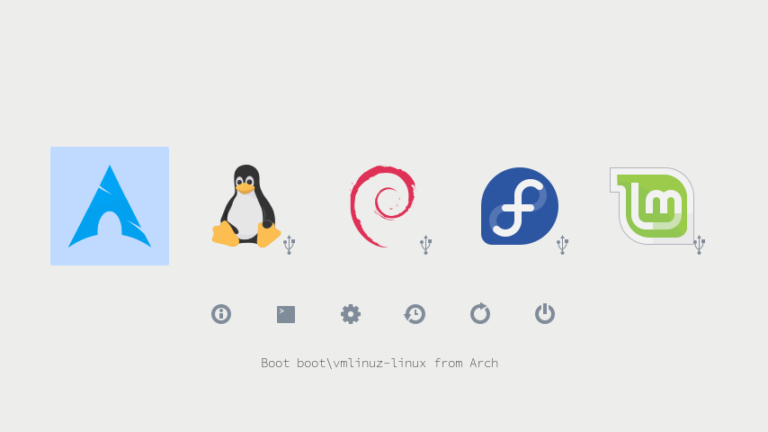

- Uninstall refind boot manager linux install#
- Uninstall refind boot manager linux zip file#
- Uninstall refind boot manager linux update#
- Uninstall refind boot manager linux mac#
Reference - This guide has been inspired from here. If the OS you wish is Linux, follow the Startup Manager Guide. If the OS you wish is macOS or Windows, follow Apple's documentation where you have to follow the Change your startup disk for every startup section.
Uninstall refind boot manager linux mac#
Boot into macOS using the Mac Startup Manager. Release the Option key when the Mac Startup Manager gets displayed. The GNU operating system uses GNU GRUB as its boot loader, as do most Linux distributions and the Solaris. In order to fix it, turn off your Mac and restart while holding down the Option key. It is predominantly used for Unix-like systems. Some users have also faced it in the first macOS boot using rEFInd on new rEFInd installations. This bug is observed only if you have performed a force/unsafe shutdown by pressing and holding the power button in the previous boot. Sometimes, while booting into macOS using rEFInd, users get stuck at a blank screen.

Fixing blank screen on booting macOS using rEFInd ¶
Uninstall refind boot manager linux update#
This step has to be performed every time you update macOS to a newer version, as this makes the macOS startup disk as the default startup disk. Now on every startup, rEFInd will get displayed by default. Now press and hold the Control key and without releasing the Control key, boot into the rEFInd startup disk. When the startup manager gets displayed, release the Option key. In order to do so, restart your Mac and press and hold down the Option key. Making rEFInd default at startup ¶Īfter correctly installing and configuring rEFInd, we need to make it boot by default on every startup. In case the line use_nvram true is present instead, change true to false. In case the line is missing, add it at the end of nf file. Make sure it is not commented (doesn’t have a # before the line).

You may confirm this by checking presence of use_nvram false line somewhere in the middle of the nf file (the one mentioned in above instructions). In latest editions of rEFInd, preventing use of NVRAM is enabled by default. Preventing use of NVRAM is must as T2 doesn’t like someone to touch the NVRAM. I then shutdown OSX 10. I opened this GREAT PIECE OF WORK OSX 10.10 straight up again, loged in and installed rEFInd. General: So what I did was uninstall rEFInd (all traces of it), then shut down OSX. What I have tried: - Uninstalled rEFInd,Installed it. Preventing use of NVRAM (Likely to have been enabled already) ¶ rEFInd does NOT show up on boot screen. Make sure you replace disk0s4 (found in 4th, 5th, 6th and 7th line of the command given below) with the disk identifier you got in the output as described in step 5 and refind-bin-0.13.2 (found in 1st line of the command given below) with the name of folder which was created in step 4.

Here, the disk indentifier of REFIND volume is disk0s4. A sample output is given below:-Ģ: Apple_APFS Container disk1 284.0 GB disk0s2ģ: Microsoft Basic Data Windows 215.9 GB disk0s3Ĥ: Microsoft Basic Data REFIND 103.8 MB disk0s4Ġ: APFS Container Scheme - +284.0 GB disk1Ģ: APFS Snapshot .update-. 15.3 GB disk1s1s1ģ: APFS Volume macOS - Data 33.9 GB disk1s2Ĥ: APFS Volume Preboot 567.1 MB disk1s3ĥ: APFS Volume Recovery 626.1 MB disk1s4 Open the terminal and run diskutil list to get the disk identifier of the REFIND volume created in step 1. Here means the same as described in step 3. The contents shall be extracted in a folder named refind-bin.
Uninstall refind boot manager linux zip file#
For eg:- If you have downloaded 0.13.2 version, it will be available as refind-bin-0.13.2.zip.Įxtract the zip file (can be done by double clicking on it). The binary zip file of rEFInd shall be available in the downloads folder by the name of refind-bin-.zip, where represents the version of rEFInd you have downloaded. Get a binary zip file of rEFInd from here. With the help of disk utility, create a 100-200MB MS-DOS FAT partition and label it as REFIND. You will also need to have secure boot disabled. Installation ¶Īll steps given here have to be performed on macOS. Though there are various options to get rEFInd on your Mac, it is recommended to follow the instructions given below unless you know what you are doing.
Uninstall refind boot manager linux install#
This guide shall help you install the rEFInd Boot Manager in your T2 Mac in the safest possible way.


 0 kommentar(er)
0 kommentar(er)
